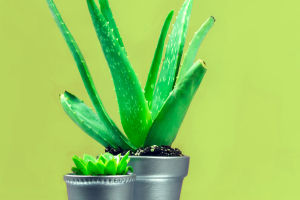As an important component of floral art, the peony is a very popular flower. It is a hardy and drought-tolerant plant that is widely distributed in temperate climates around the world.
The language of the peony flower represents self-respect, nobility, elegance, pursuit, and high character, like an elegant lady, presenting a dignified and refined temperament.
Generally speaking, peonies can be divided into two types, namely normal peonies and open peonies. Normal peonies usually need to be planted in the garden, while open peonies can be planted directly in the field or bird's nest, which is inexpensive and easy to manage.
peony lactiflora prefers a sunny, well-drained environment and does not tolerate flooding or high humidity, so it is best to choose a slope or a location slightly above the surrounding terrain to plant.
Externally, peony flowers have fan-shaped leaves that are generally ternately compound, with petioles that are usually very long.
The petals come in many colors, including red, pink, pale yellow, white, and purple. The petals are further divided into two layers, the outer layer being the large petal, which is five, and the inner layer being the small petal, which is seven.
The flowering period is usually in April and May, specifically from the end of April to mid-June. Peony lactiflora has a large flower diameter and high ornamental value.
Historically, the peony is one of China's national flowers, also known as the "rich flower" and "flower king", and is one of China's famous traditional flowers. As early as the Tang Dynasty, peonies were widely planted and thus spread to ancient Chinese literature and art.
They are reflected in classic literary works such as "Dream of the Red Chamber" and "Journey to the West". Peony lactiflora has also been passed down in folklore with many meaningful legends and stories, such as "Beauty is better than flowers" and "The flower is rich and wealthy". These stories link the beauty of the peony with happiness and make people like it even more.
The peony also has medical value. It has the medicinal value of invigorating blood, nourishing the body, and beautifying the skin. Research in natural and Chinese medicine has shown that the root, stem, leaves, and flowers of the peony can be used as medicine throughout the body
In the field of Chinese medicine, peony root is one of the most commonly used herbs to treat gynecological diseases, replenish blood, and beautify the face. It is also used in a number of health products and cosmetics made from peonies, which are highly sought after.
Horticulturally, the peony is a fairly well-kept flower, suitable for growing in a sunny, well-ventilated place. Also, because of its large flower diameter, it needs support. If left to grow naturally, there is a great risk of tipping and instability.
Therefore, it is important to bury the support material vertically in the ground and tie it or use a stand to prevent the flower stems from shaking and causing the flowers or branches to fall over. In addition to support, it is usually necessary to pay attention to timely pest and disease control to ensure healthy flower growth.
For the maintenance of peonies, fertilization is a very important part of the process. In the month before flowering, peonies can be fertilized with appropriate amounts of phosphorus, potassium, organic fertilizers, and other nutrients to increase the bloom rate and keep the plant's branches and leaves healthy.During the flowering period, the peony does not need to be fertilized to avoid over-nourishing the quality of the flowers.
As a very popular flower, the peony is favored by many people for its elegance, nobility and beautiful appearance. Whether planted in the garden or in the field, Paeonia is a great flower to grow and has a very high value in the field of horticulture.


